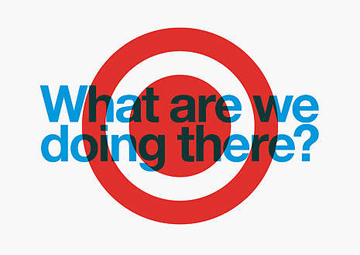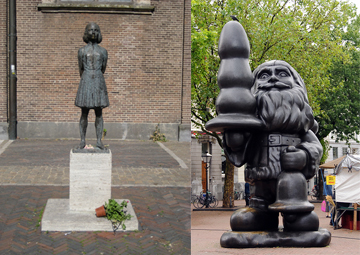
Announcement for SKOR's symposium "Actors, Agents, and Attendants. Speculations on the cultural organization of civility," 2010.
Living in Chicago, there’s little chance of avoiding public art. From murals to monuments, legs to eyeballs, the city is inundated. Though I will admit to enjoying cell phone photos in front of everyone’s favorite Bean, I still approach the debates about “Public Art” with trepidation. As cities clamor for the cultural cachet (read: cash) that comes with having an Eliasson or a Christo, dissenting voices from both local residents and art world impresarios inevitably chime in, and the issues surrounding who and what Public Art is for grow progressively murky.
To find out how the Dutch negotiate this territory, I met with Theo Tegelaers, a curator for SKOR, the Dutch Foundation for Art and Public Space. Essential to SKOR’s mission is their engagement with this debate, an interrogation of the relationship between the “social, political, and cultural” implications of bringing art into the public sphere.
Here I must make a confession: As I prepared for the interview, I naturally looked to SKOR’s website for background information. Blinded by business-centric words like “client” and “success,” I somehow convinced myself that SKOR was a group of “curators-for-hire” doing vanity projects for fiscally inclined corporations.
This was, however, a gross misjudgment.
Tegelaers explained the lengthy and intense process of considering a project. Seeking clients who are open to artwork that is innovative, provocative, and unexpected, SKOR’s small team takes on only a selection of the proposals that they receive. These “clients” are a mixture of civic organizations (often needing to fill percent-for-art obligations) and private companies. Now, in theory, working with a private company might afford more artistic freedom in the projects, as private companies are under no obligation to entertain the varied and often conflicting desires of the public. But herein lies a potential problem. One of the main questions raised about Public Art is just who the public is. Can a work where the commissioning body doesn’t consider its public even be considered Public Art?
I bring this up to highlight the issue, but just because a company isn’t required to discuss the artwork with the public, doesn’t mean they won’t, or that SKOR won’t. As Theo made clear in our meeting, SKOR sees the public as indivisible from any discussion of art in public space.
Overwhelmingly, the projects SKOR has realized have been with civic bodies, paying special attention to facilities for the elderly and the mentally ill. One particular project that caught my eye was the newly unveiled “Power Toilets” by Denmark’s SUPERFLEX. Commissioned for a recently developed beach area in the northern Dutch city of Heerhugowaard, these are more than your typical facilities. For the project, SUPERFLEX created an exact interior replica of the U.N. Security Council bathrooms in New York using covertly snapped photos for reference. Visitors to the park are welcome to relieve themselves with the same comforts of the world’s top peacekeepers. “Power Toilets” adeptly manages to be both practically and intellectually engaging, putting pressure on pertinent political topics and infusing them with a sense of humor. In a voice that speaks to both the public and the art world (if they are to be considered separately), this artwork exemplifies the type of projects SKOR advocates.
Through the use of publishing and public forums and by pursuing a practice that sees Public Art as existing in any media and lasting for any length of time, SKOR’s work goes beyond the plop art permeating many cities. I can’t help but be excited by the prospect of government-funded Public Art programs in Chicago and other U.S. cities taking a cue from this methodology. To widen the scope of what makes it onto our sidewalks and to intensify the discussion surrounding the possibilities for Public Art would only deepen the public’s experience with it.
But who am I kidding? When I reflected on my trip to the Netherlands, only two public works (neither by SKOR) really stuck with me, an analysis of which would certainly require a separate post:





